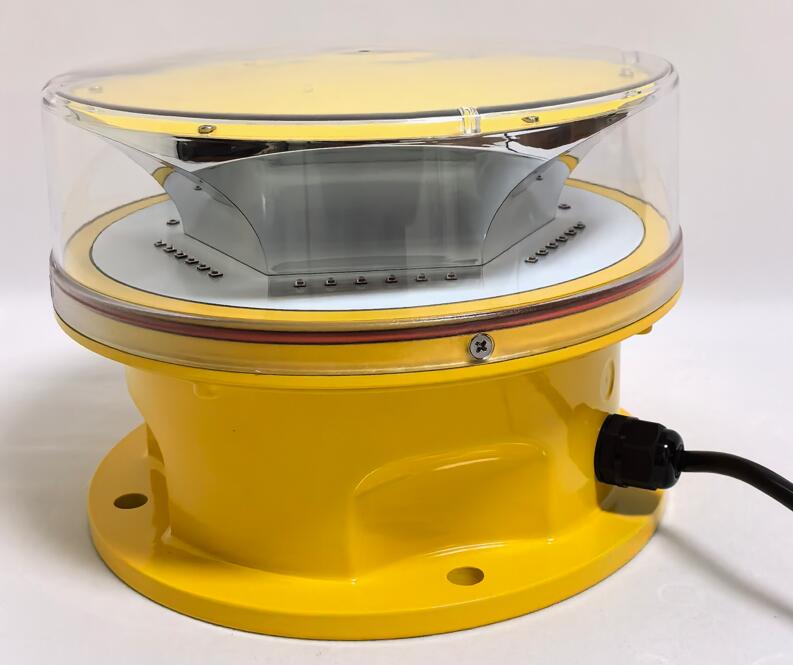Red Obstruction Lights: The Critical Markers of Aviation Safety
Introduction: Guardians of the Night Sky
As dusk falls across urban landscapes and remote installations alike, red obstruction lights emerge as silent sentinels of aviation safety. These distinctive markers serve a vital purpose in our increasingly crowded airspace, preventing collisions between aircraft and tall structures. This article explores the technology, applications, and evolving standards behind these essential safety devices.
The Science Behind the Glow
Red obstruction lights dominate nighttime aviation warning systems due to several key advantages:
Optimal Visibility: The human eye detects red wavelengths most efficiently in dark conditions

Reduced Light Pollution: Unlike white strobes, red lights minimize skyglow while maintaining effectiveness
| red obstruction light |
Universal Recognition: Pilots worldwide instantly recognize red as a hazard indicator
Modern systems employ advanced LED technology that delivers:
50,000+ hour lifespans
Consistent luminosity across temperature extremes
| red obstruction lights |
Instant-on capability without warm-up periods
Critical Applications Across Industries
1. Urban Infrastructure Protection
Skyscrapers and high-rise buildings utilize red obstruction lights at night as part of dual lighting systems that switch from white strobes (day) to red beacons (night). This transition follows FAA Advisory Circular 70/7460-1L requirements.
2. Telecommunications Tower Safety
Cell towers and broadcast antennas employ combinations of:
Steady-burning red obstruction lights (L-810)
Medium-intensity red strobes (L-864)
Synchronized lighting systems for multiple-tower sites
3. Wind Energy Farm Marking
Modern wind turbines incorporate:
Integrated red obstruction lights in nacelles
FAA-compliant lighting patterns
Aircraft detection systems that activate lights only when needed
4. Maritime and Offshore Applications
Oil platforms and coastal structures use specialized marine-rated red obstruction lights featuring:
Saltwater corrosion resistance
Enhanced waterproofing (IP68 rating)
Vibration-resistant mounting systems
Technological Advancements in Red Lighting
The latest generation of red obstruction lights incorporates groundbreaking features:
Smart Control Systems
Light-sensitive photocells for automatic dusk-to-dawn operation
Remote monitoring via cellular or satellite networks
Predictive maintenance algorithms
Energy Efficiency Breakthroughs
Solar-powered options for remote installations
Ultra-low power consumption designs
Battery backup systems with 72+ hour runtime
Enhanced Visibility Solutions
Prismatic lens optics for 360° visibility
Variable intensity controls for different weather conditions
Synchronized flash patterns across multiple units
Regulatory Landscape and Compliance
Global aviation authorities maintain strict standards for red obstruction lights:
FAA Requirements (AC 70/7460-1L):
Light intensity specifications
Vertical spacing guidelines
Flash pattern definitions
ICAO Standards (Annex 14):
Color chromaticity requirements
Minimum visibility distances
Obstruction marking specifications
European EN IEC 61820 Standards:
Photometric testing protocols
Environmental durability requirements
Electromagnetic compatibility
The Future of Red Warning Systems
Emerging technologies promise to revolutionize red obstruction light applications:
LiDAR-Activated Systems: Lights that only activate when aircraft approach
Self-Cleaning Optics: Nano-coated lenses that repel dirt and moisture
Integrated Radar Reflectors: Combining visual and electronic marking
AI-Powered Predictive Lighting: Systems that anticipate weather changes and adjust intensity accordingly
Conclusion: Beyond Basic Compliance
While red obstruction lights represent a mature technology, their role in aviation safety continues to evolve. Modern systems now offer:
Greater reliability through solid-state LED technology
Enhanced functionality via smart monitoring
Reduced environmental impact through energy efficiency
For aviation authorities, infrastructure operators, and urban planners, these devices represent more than regulatory compliance—they embody a commitment to preserving life in our increasingly complex airspace. As drone traffic and urban air mobility expand, the humble red obstruction light will remain a cornerstone of aerial safety systems worldwide.
The next generation of these critical markers will likely incorporate adaptive technologies that respond dynamically to air traffic density, weather conditions, and even specific aircraft types—ensuring their continued relevance in the aviation ecosystems of tomorrow.
